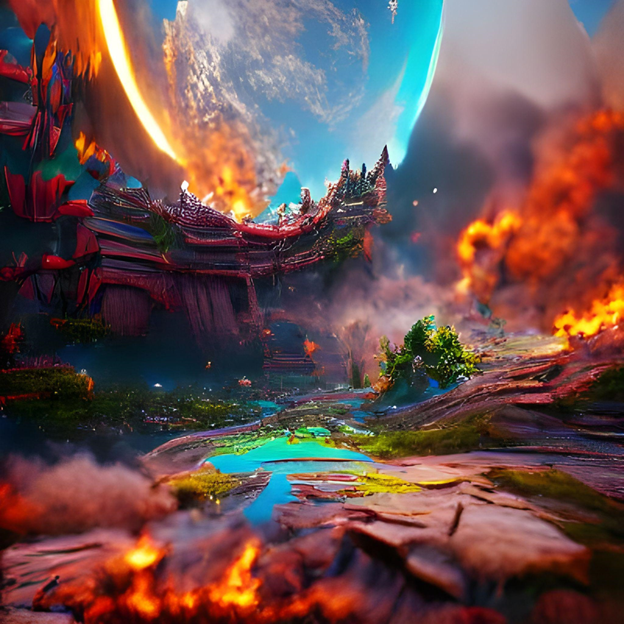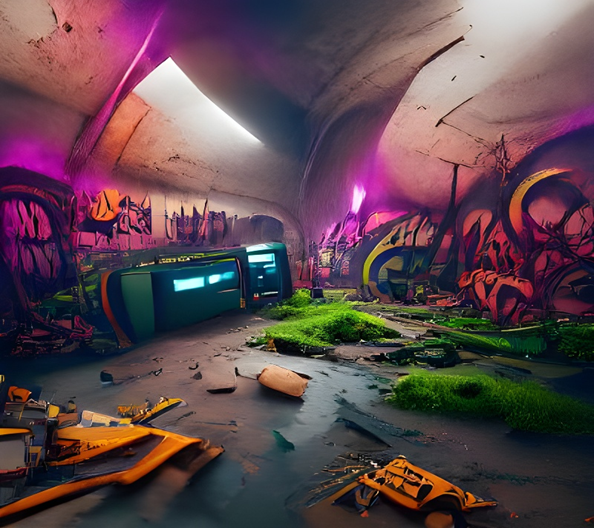by Jk_TheAnonymousWriter

(AI Generated)
The apocalyptic threat is revolving and approaching the earth at a much faster rate, which gives us a small window to do something about it. It seems like we are either standing on a time bomb or in the spotlight where the space-time bomb will eventually fall.
We are facing more than a thousand mass annihilation threats that could wipe out the entire human civilization. Those apocalyptic threats are categorized as — Asteroid/comet strikes, high-energy solar flares, expanding sun, local gamma-ray bursts, supernova explosions, and moving stars. And today we are going to talk about asteroid strikes.
It has Happened Earlier and may happen again
The day the sky fell was approximately sixty-six million years ago, when dinosaurs were able to see their approaching end. Luis Walter Alvarez and Walter’s theory suggest that a layer of iridium-rich clay was formed as the asteroid hit the earth. The sudden devastation in the affected area and the widespread secondary effects of the impact were the prime reasons why dinosaurs died so instantly.
How could an asteroid wipe out the entire population of dinosaurs?
Well, asteroids aren’t just some space debris or dust; they are pretty large in shape and have rock bodies. They orbit the sun and can range from a few to 100s of meters in diameter. If the asteroid’s fragment lands on the earth’s surface, it’s known as a meteorite. Some meteoroids and space debris burn out when entering the earth’s atmosphere.
By now, numerous craters have been found that support this tragic end of the dinosaurs and the approaching apocalyptic threat.
The asteroid that put an end to all dinosaurs is thought to have a diameter of about 10 to 15 km. Its impact site is known as the Chicxulub crater. The velocity of the asteroid collision caused a much larger crater, about 150 km in diameter. It resulted in throwing a huge amount of debris into the air, resulting in massive tidal waves and substantial fires that drowned certain parts of the American continent. It further contaminated the climate and generated heatwaves; the dust traveled across and somehow blocked out the sunlight (not completely) that reached the earth’s surface. All this led to the devastation and mass extinction of quite a few species, including dinosaurs, and it also had a huge impact on plant growth.
It seems Asteroid was just testing its impact on Dinosaurs
So, by now, I think you know what will happen if an asteroid (1 km wide) ever hits or strikes the earth. Researchers say that even if an asteroid passes the earth’s orbit, it will result in hugely devastating effects. Astronomers have already discovered over 8000 NEOs (near-Earth objects) large enough to wipe out an entire state or city.
Even smaller asteroids that might strike Earth will result in devastating effects. For example, the space rock that fell over Chelyabinsk, Russia, in 2013, was about 19 meters wide. It caused severe damage not only at the site of the impact but also 93 kilometers away from the original site. More than 1,200 people were injured. So if you think an asteroid will fall on America and then Canada and Mexico will be alright or have no threat or impact, then you are wrong.
Could we have any chance to survive if a gigantic asteroid collides with Earth?
If we are fortunate, the asteroid will be small and will fall over the ocean in deep water. Then less asteroid rock dust will vaporize, and heat waves and further devastation will be much less as compared to when it straightaway hits the ground. It lowers our chances of extinction but doesn’t provide any surety.
Now assume that if the asteroid is large enough, then it most surely will trigger the apocalyptic button that will put an end to the human era. Even though the asteroid won’t have to touch the surface to wipe out human civilization, the atmospheric impact will create a firewall, and there will be an asteroid shower, large enough to destroy anyone who will see it.
During that time, noxious and poisonous gases would cloud up the sky, which would mostly contain asteroid dust. As a result of the sunlight being blocked, no future greens and vegetation, animals, or humans will survive.
Thinking of Buying an Underground Bunker so that you can survive, well the chances of survival are low
If you are lucky enough, your bunker won’t be situated at the site of impact. The direct hit from a large asteroid will excavate a crater approximately 40 kilometers deep. So find a bunker that is much deeper than that.

(AI Generated)
Even if your bunker survived the shockwave and was situated somewhere safe. Eventually, you will find the world devastated, and the food in the bunker will run out after some time; either you will die of starvation or from devastating heatwaves and poisonous gas caused by the impact
What if Doctor Strange transports the asteroid to another dimension using his sling ring?
First, it’s not possible; second, it’s fiction. We don’t have Doctor Strange; we have space agencies that are working to rule out this possible threat. Space agencies like NASA are planning to deflect the asteroid from its original path so it doesn’t strike our beloved planet Earth.
Scientists are continuously observing the NEO and estimating the trajectory of a potential asteroid that may strike Earth.
Surprisingly, if an asteroid or space rock changes its trajectory and puts itself in Earth’s sights, then we may have a plan that works out in our favor. NASA has just tested a plan to deal with this possible situation. The space agency smashed an uncrewed rocket into the 525-foot-wide (160-meter) asteroid known as Dimorphos and demonstrated that they were successful in altering the asteroid’s trajectory.
Because Dimorphos isn’t heading for Earth, we can test this as a planetary defense system for future asteroid strikes; if it works, Dinasours will be jealous.
With birth, the end is also determined, and the end of the Earth is given. Knowing this should fill us with terrible fear. It is something we might be able to change, which is similar to our life, which has a start and an end. It is what distinguishes humans; all we can do is make the most of our time on Earth and live a happy and fulfilling life. Rather than looking up at the sky as a threat and wondering what could kill, aspire to the beauty of what is ahead of us and what surrounds us, and get inspired by infinite space that also offers a future and meaning.
The great news is that there is no known potentially hazardous asteroid, a threat that may kill human civilization, reaching Earth for at least the next 100 years.
